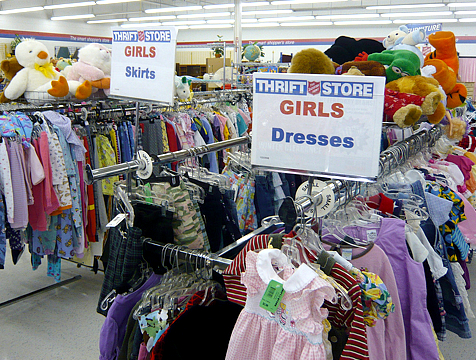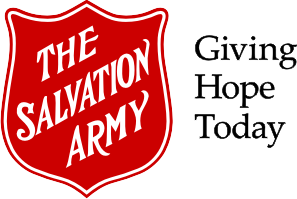What You Should Know About Salvation Army Thrift Stores

With more than 200 nationally and locally operated thrift stores from coast to coast, The Salvation Army operates one of Canada’s largest national clothing recycling operations.
Do you have a question about Salvation Army Thrift Stores? Take a look at these responses to some frequently ask questions to find the answer you need!
1. Where do thrift stores get their merchandise from?
Most of what we give away and sell is donated by a generous and supportive donor base.
There is great competition for donated clothing. Most of that comes from for-profit firms, many of which offer little or no support to any given charity.
The Salvation Army is one of few charities that collect, process, and sell our own donations to the public. This enables us to offer quality goods at reasonable prices and raise funds to support many of our social programs. Demand often exceeds supply and there are times we are forced to buy merchandise, generally from other charitable collectors.
2. Are donations tax deductible?
Under Canada Revenue Agency guidelines, we can offer tax receipts for some donations. For example, we are permitted to offer a tax receipt for new product donations. Many firms provide us with product returns, such as floor models, and end-of-line items. This not only prevents these items from landfills, but firms are able to give back to the communities in which they operate.
Individuals are also eligible to receive a tax receipt for donated used furniture, collectables, household goods, art, and knick- knacks etc. A request must be made at the time of donation so items can be appraised, and donor information obtained. Unfortunately, we are not permitted to receipt for used clothing under CRA rules.
3. What happens to items that don’t sell?
There are always items that don’t sell. This may be due to stains, rips, wear, and sometimes style. The Salvation Army sells these items in the recycling market. They are sold by the pound to clothing graders who send them to fibre recovery to be made into other products such as upholstery stuffing.
Some articles end up in developing nations where quality clothing is scarce. In any case, items are kept from landfills, and the proceeds from recycling are used to support Salvation Army social programs, just like the sales from Thrift Stores.
4. Why are prices high when donations are made to help people in need?
Our pricing is very competitive and we check it regularly against other used goods retailers, both charitable and for-profit.
Although donated items are free, as a charity we have expenses such as paid staff, rent, utilities, property tax, insurance and trucking expenses.
Additionally, even though we divert millions of pounds of items from landfills (32 million in 2012), and we are a major recycler of metal, electronics, books, cardboard, leather goods, etc., we do generate some garbage and the safe disposal of that garbage comes with a cost.
After expenses, the proceeds we generate support The Salvation Army’s many social programs, such as children’s camps, food banks and shelters. And through the Thrift Store, we provide (free of charge) items to individuals or families referred to us from various social services agencies and other charities.
5. Are there items you don’t accept, and why?
We are forced to refuse infant and child-related equipment such as cribs, car seats etc. Resale is regulated by Health Canada and guidelines are very strict. We lack expertise and resources to meet the set standard and choose not to sell these items.
For health and safety reasons we don’t accept used mattresses, box springs or sleeper sofas. We accept most household goods, furniture and clothes in useable condition. What is usable condition? If you would give it to a friend to use then chances are The Salvation Army can use it.
Visit one of our clean, bright and organized stores!
Note: Due to geography and other limiting factors not all stores have the same policies and procedures in place. Donors should contact their local store if they have specific concerns or questions.
For more information and FAQs on Salvation Army Thrift Stores, click here.




